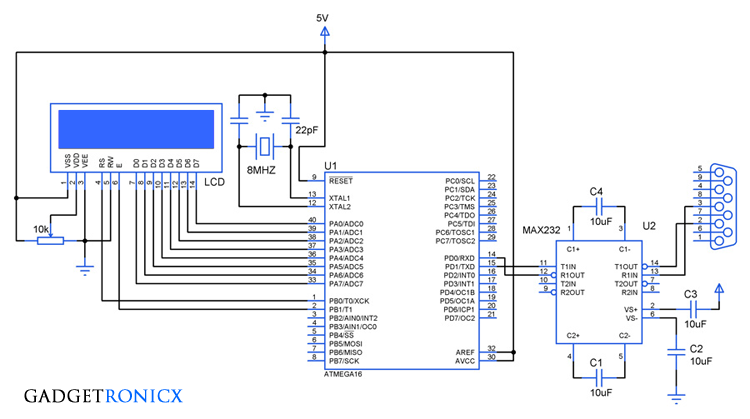 |
| Serial Communication tutorial |
This tutorial focuses to teach you how to program AVR Serial Communication (UART). UART plays an important role in almost every embedded applications which we see in our day to life and hence it was considered to be very important concept in every Microcontroller.
The above design demonstrates the usage of UART to send and receive data via hyperterminal as well display the received data in 1 16×2 LCD. As we all know Microcontroller works in TTL logic which is not compatible with the PC so we have to employ a level converter IC MAX232, read more about the working of IC MAX232.
REGISTERS USED IN AVR SERIAL COMMUNICATION:
In AVR there are five registers which are meant to use for Serial Communication such as UDR, UBBR , UCSRA, UCSRB, UCSRC. Lets see the functions of these registers briefly.
UDR:
 |
| UDR Register |
UDR or USART Data Register is meant for writing and receiving the data through the UART. In this there are two shift registers referred to as Transmit Shift register and Receive Shift register with each having a separate buffer register. When the data is written to UDR it will be transferred to Transmit Data buffer register and when we read the contents of the Receive Data buffer register is returned.
UBRR:
In AVR the baud rate of the UART is programmable and it is achieved by means of this UBRR register. It is 16 bit register classified into lower UBRRL and higher UBRRH out of which 12 bit is usable The formula governing the relation between the value of UBRR and Oscillator is
Baud Rate = (Oscillator Frequency / (16( UBRR Value +1))
So for a 8MHz oscillator frequency and 9600 baud rate the value need to be loaded in the UBRR will be
UBRR = (8MHZ /16(9600))-1
=(500KHz/ 9600) – 1
= 51 ( equivalent hex 33)
UCSRA:
 |
| UCSRA Register |
UCSRB:
 |
| UCSRB Register |
UCSRC Register:
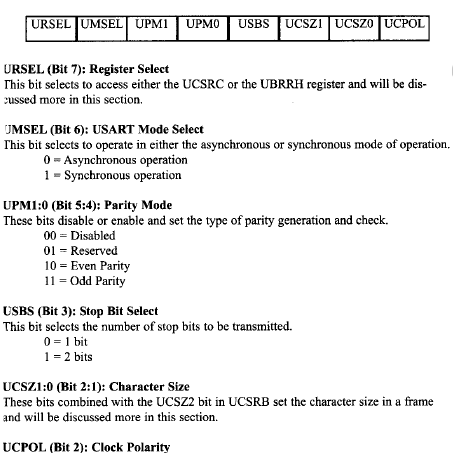 |
| UCSRC Register |
STEPS TO PROGRAM UART:
- Load the hex value in the UBRR Register for the Baud rate you are about to use.
- Set the bits in the registers UCSRA, UCSRB & UCSRC based on your usage requirement.
- For Transmission Place the data in the UDR register and check for the appropriate flag to set in the UCSRA regsiter
- Clear the Flag for further transmission.
- For receiving the data, wait for the Receive flag to set in the UCSRA register and then read the UDR register to obtain the received data for processing or display.
- Clear the Flag for further data reception.
CODE:
#include<avr/io.h>
#define F_CPU 8000000UL
#include<util/delay.h>
void display(char a,int b); //LCD display routine
void check();
char c;
int i,cursor;
int main(void)
{
DDRA=0xff; //Setting Directions
DDRB=0x03;
display(0x38,0);
display(0x0f,0);
display(0x80,0);
UBRRL=0x33; //Hex value for Baud rate 9600
UCSRB=0x18; //Initialization of UCSRB reg
UCSRC=0x06; //Initialization of UCSRC reg
while(!(UCSRA&(1<<5))); //Flag Check
UDR='B'; //Data write in UDR
UCSRA&=~(1<<5); //Clearing Flag
while(!(UCSRA&(1<<5)));
UDR='G';
UCSRA&=~(1<<5);
while(!(UCSRA&(1<<5)));
UDR='N';
UCSRA&=~(1<<5);
while(1)
{
while(!(UCSRA&(1<<7))); //Flag check for receive
c=UDR; //Data Read
display(c,1); //Displaying received data in LCD
UCSRA&=~(1<<7);
check();
}
}
void display(char a,int b) //LCD routine
{
PORTA=a;
if(b==0)
{
PORTB&=~(1<<0);
}
else
{
PORTB|=(1<<0);
cursor++;
}
PORTB|=(1<<1);
_delay_ms(10);
PORTB&=~(1<<1);
_delay_ms(10);
}
void check() //Routine to print data continuously
{
if(cursor==16)
{
display(0xc0,0); //Jumps second row after reaching end of first row
}
else if(cursor==32)
{
display(0x80,0); //Jumps first row after reaching end of second row
cursor=1;
}
}

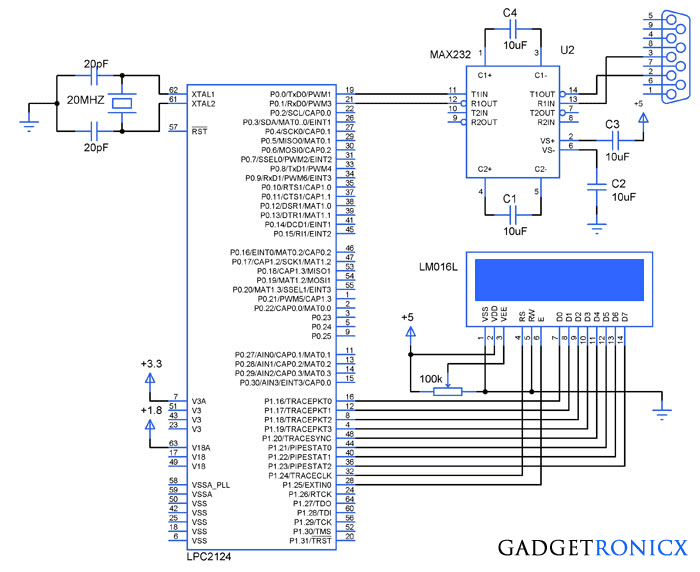
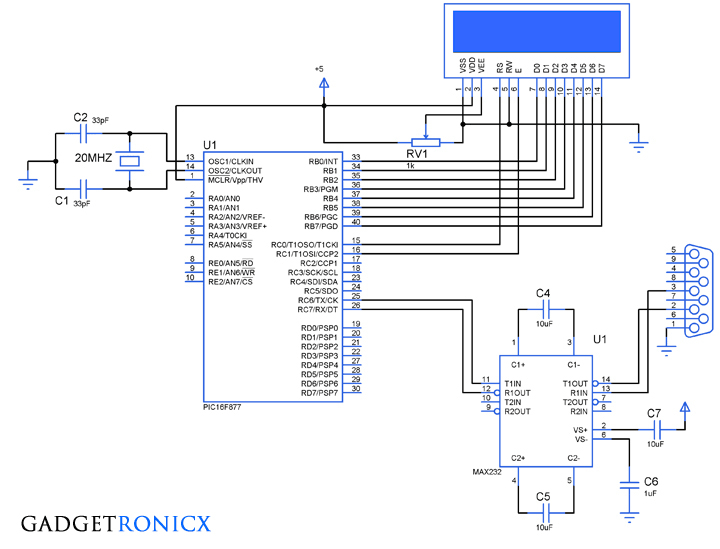
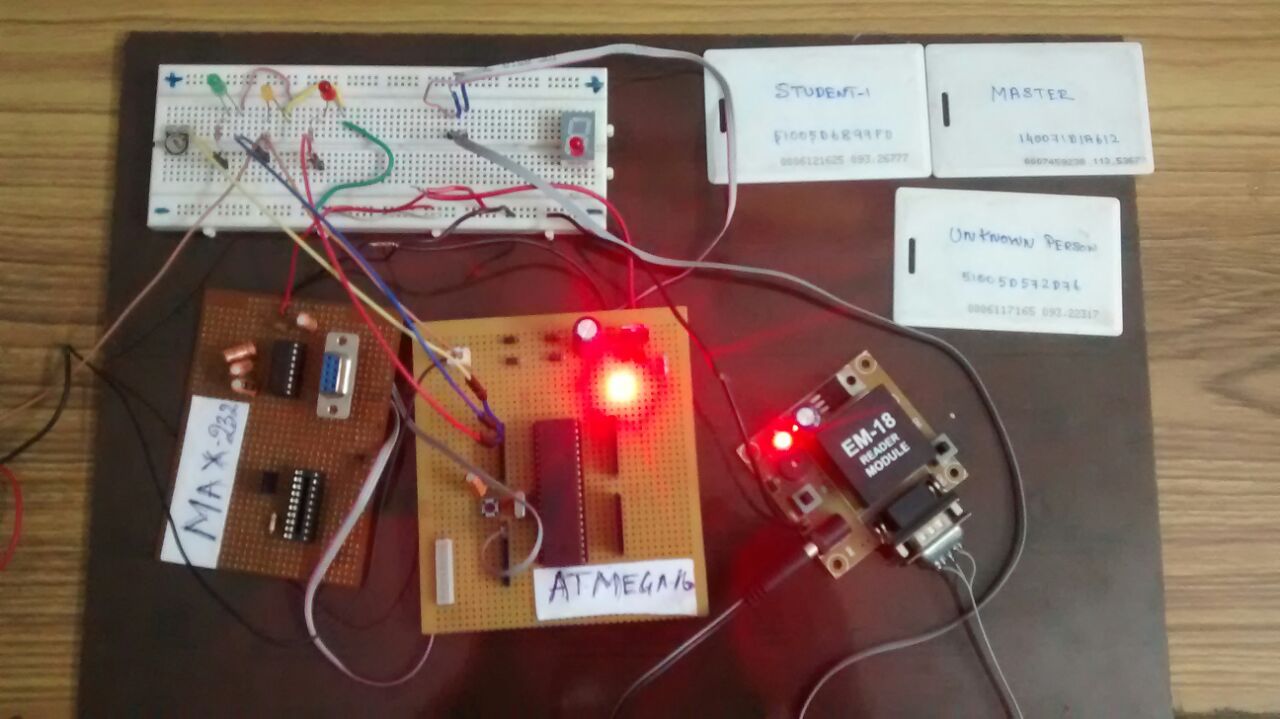
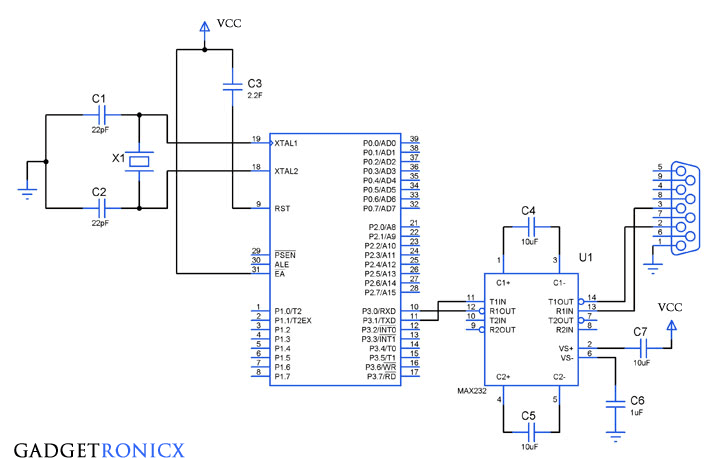
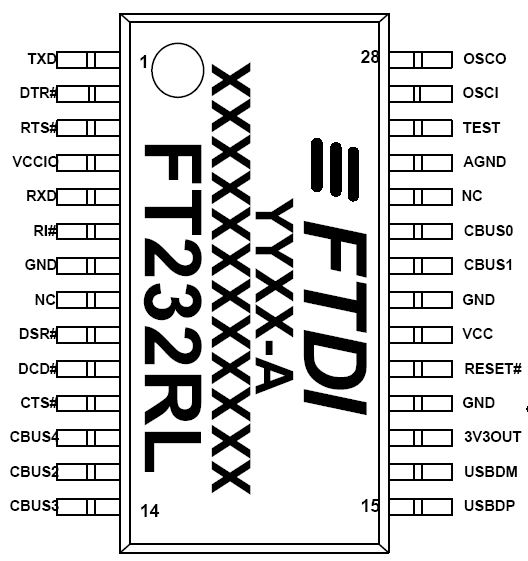
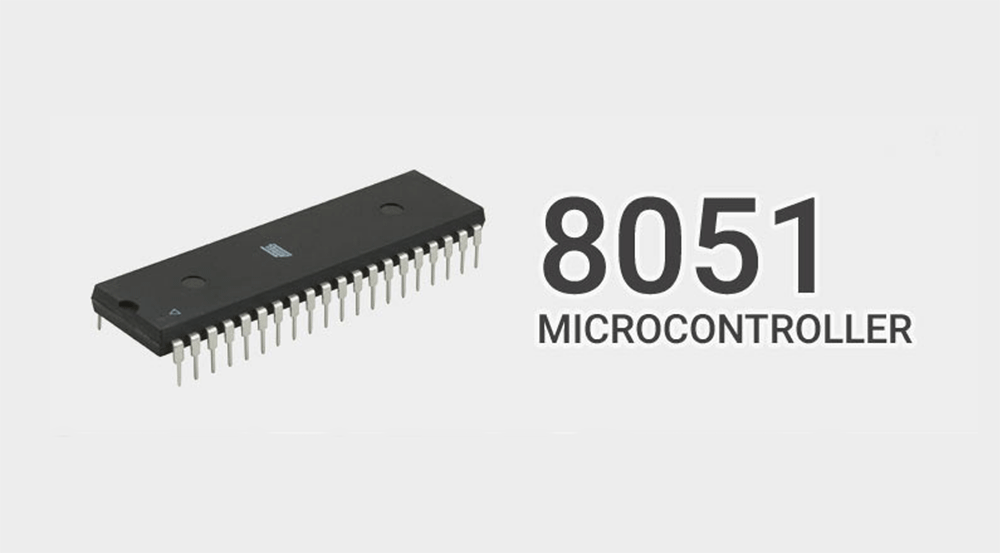
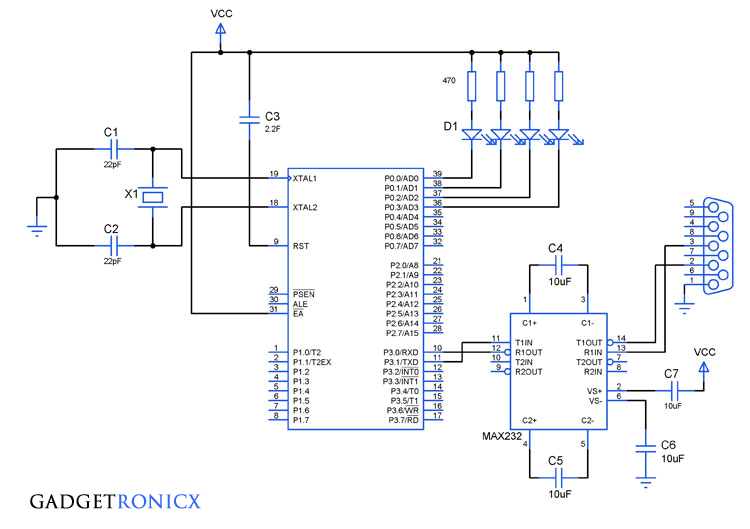
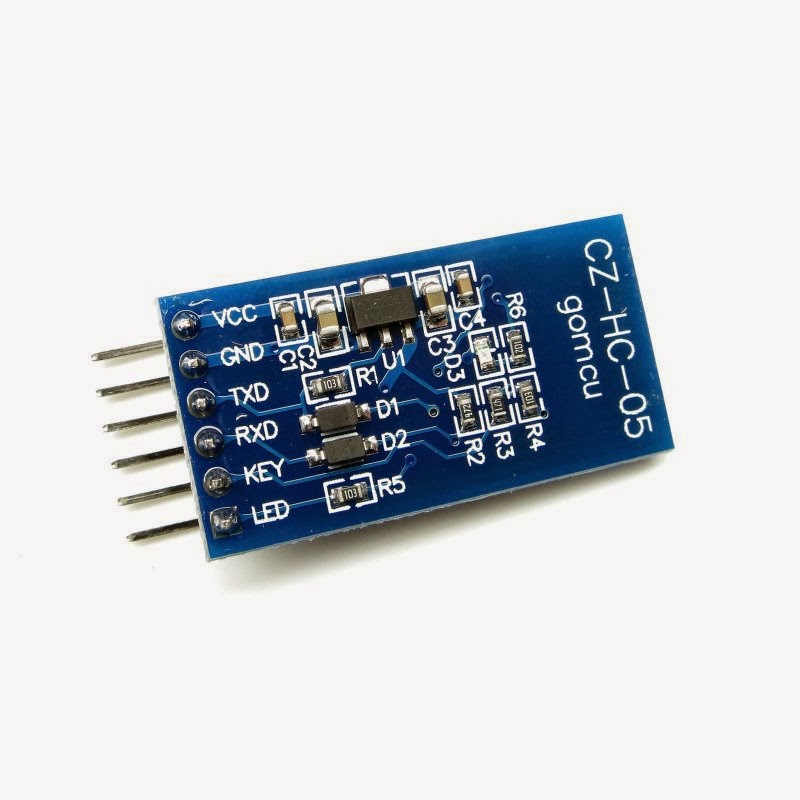
Typo mistake :
UBRR is mis-spelled as UBBR..
AnkitKumar,
Corrected now, thanks for bringing into notice.